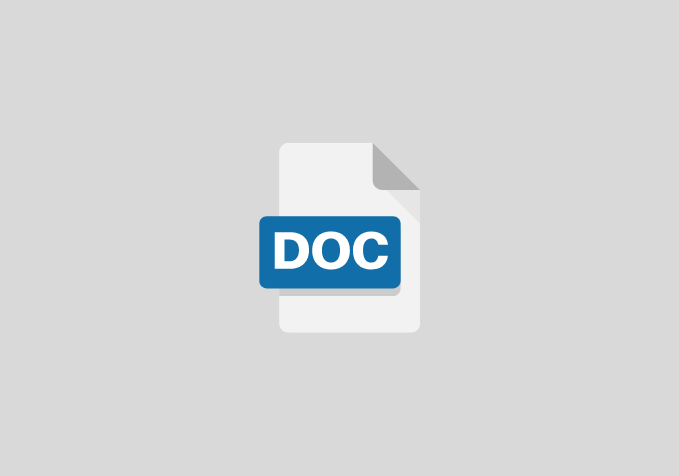A Proposal on Economics of Poultry Waste Management in Nsukka Local Government Area, Enugu State
Overall objective
The overall objective of this study was to evaluate the economics of manure disposal and utilization among farmers in Nsukka Local government area, Nigeria.
Specific objectives
- To characterize manure production, disposal and use practices in the study area;
- To analyse the costs and benefits associated with poultry waste management practices in the study area;
- To determine the socio-economic factors that influence willingness of poultry farmers to use and pay for manure in the study
LITERATURE REVIEW
Manure Production, Disposal and Use Practices
According to Raynk (2004) and Kadigi (2013), different types of animals create different amounts of manure. The amount of manure produced each day varies, according to Kadigi (2013), from 0.22 kg/day/bird for poultry to 15-20 kg/day/animal for dairy cattle. For poultry, Raynk (2004) reports a smaller amount of 0.14 kg/day/bird, while dairy cattle receive a higher amount of 44.5 kg/day/animal. Feed management, manure handling, and application method all have an impact on the amount of manure produced within a particular source.
Nigeria’s continental territory produces roughly a million tons of poultry manure annually (Baitilwakea et al., 2011). Despite this vast potential, the majority of the country only uses a little amount of chicken manure for crop cultivation. Later on, According to Mtengeti and Jackson (2005), Nigerian farmers do not receive enough manure to fertilize their crop fields, thus the bulk of them leave the manure in the kraal and supplement it with maize stover. However, due to a lack of disposal space caused by a growth in manure output in densely populated urban and periurban regions, decomposing manure produces an unpleasant smell and favors the hatching of flies and diseases (Kadigi, 2013).
Because it is difficult to return animal waste and sewage at rates that the agricultural land can absorb when many animals are kept in small spaces, especially in cities, manure disposal in urban areas becomes a challenge, and poultry farmers incur significant costs in doing so (Chivenge and Six, 2011).
The need for management systems that can use the biomass and nutrients in the manure without causing unacceptable air, soil, or water pollution was made even more urgent by Babayem and Dauda’s (2009) observation that some traditional suburban settlements receive little to no attention when it comes to the provision of waste collection and disposal services. Thus, an appropriate strategy may be developed to connect urban livestock with peri-urban systems, making urban manure available to farmers. Additionally, it is crucial to search for affordable, effective manure disposal systems.
According to Lupindu et al. (2012), manure management strategies in urban and peri-urban settings have changed to accommodate denser populations where there is less space between people and animal waste. In addition, piling is a typical way of storing manure, even though some poultry farmers put dung directly on the ground as fertilizer to grow food. The households’ residential zones are where manure is disposed of.
RESEARCH METHODOLOGY
Research Design
The research design for this study will be cross sectional. It will be carried out between March and May 2015. Multistage sampling technique will be employed to address the objectives of the research. The steps will involve the selection of the four wards purposely followed by the randomly selection of the poultry farmers and poultry farmers from each ward as describe in sections 3.2.1 and 3.2.2 of this chapter.
Advertisements
Sampling
The population will involve all poultry farmers and poultry farmers from 29 wards of Nsukka Local government area. A purposive sampling technique based on agro-ecology, concentration of poultry farming and easy accessibility will be used to select four communities in Nsukka. The coummunities wards are known for poultry farming and horticultural production in Nsukka urban and their representation of different agro-ecology are among the reasons for selection of that Community for this study.
References
- Ali, S., McCann, L. and Allspach, J. (2012). Manure transfers in the Midwest and factors affecting adoption of manure testing. Journal of Agricultural and Applied Economics 44(4): 533 – 548.
- Boyhan, G. E., Hicks, R. J., Torrance, R. L., Riner, C. M. and Hill, R. (2010). Evaluation of poultry litter and organic fertilizer rate and source for production of organic intermediate-day onions. Hort Technology 20: 304 – 307.
- Chivenge, P., Vanlauwe, B. and Six, J. (2011). Does the combined application of organic and mineral nutrient sources influence maize productivity? A meta-analysis. Plant Soil 342: 1–30.
- Copeland, C. (2010). Water Quality Issues in the 111th Congress: Oversight and Implementation. Congressional Research Service, Lincoln. 33pp.
- Dagnew, H., Alemu, M. and Zenebe, G. (2012). Households’ willingness to pay for improved urban waste management in Mekelle City, Ethiopia. Environment for Development 12(06): 1 – 29.
- Environmental Protection Agency (2007). Inventory of US. Greenhouse Gas Emissions and Sinks 1990-2005. Environmental Protection Agency, Washington DC. 145pp.
- Food and Agriculture Organization (2000). Fertilizer use by crop in Pakistan, Organic and biological sources of plant nutrients. [www.fao.org] site visited on 10/09/2015.
- Food and Agriculture Organization (2007). Tropical Crop- Livestock Systems in Conservation Agriculture. The Brazilian Experience, Rome. 22pp.
- Gebrezgabher, A. S., Amewu, S. and Amoah, P. (2015). Consumer Preference and Willingness to Pay for Fish Farmed in Treated Wastewater in Ghana. International Water Management Institute, Accra, Ghana. 22pp.
- Gicheru, P. (2012). An overview of soil fertility management, maintenance,and productivity in Kenya, Archiv. Agronomy Soil Science 58(1): 22 – 32.
- Gideon, D. A., Kwabena, N. A. and Dennis, E. (2014). Willingness to pay for farm insurance by smallholder cocoa farmers in Ghana. Journal of Social Science for Policy Implications 2(1): 163 – 183.
- Gillah, K. A., Kifaro, G. C. and Madsen, J. (2013). A description of management and production levels of cross bred dairy cattle in Dar es Salaam and Nsukka urban and Peri urban areas. Academia Journal of Agricultural Research 1(8): 1 – 14.
- Gujarati, D. N. (2004). Basic Econometrics. (4th Ed.), McGraw-Hill Book, New York.1004pp.


